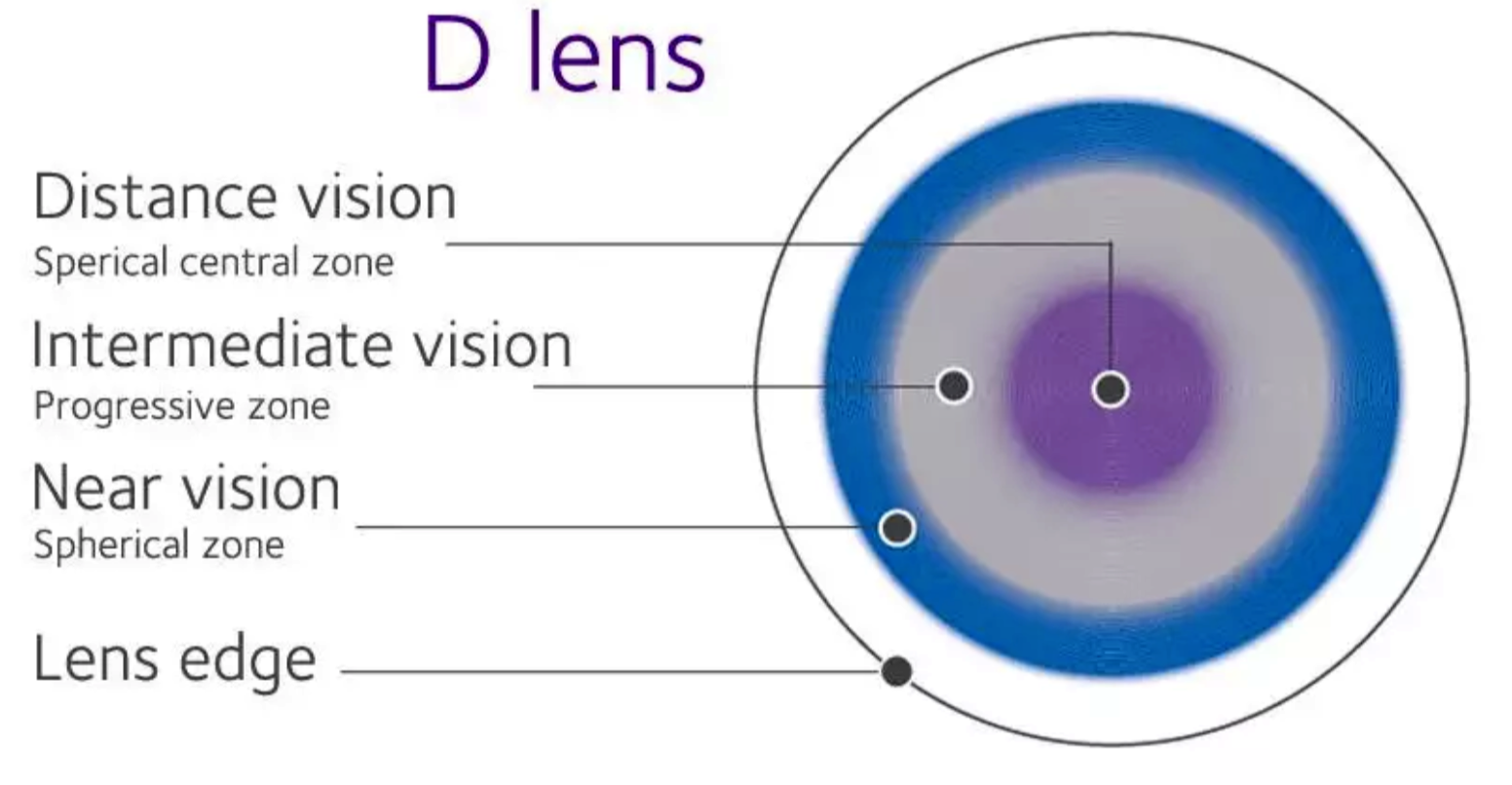 |
| High add power, despite contributing to visual differences, likely does not affect children’s visual-related quality of life in myopia management. Photo: CooperVision. Click image to enlarge. |
The leading cause of visual impairment among children—and a threat to the long-term ocular health—myopia has gained an enormous amount of attention as researchers develop and validate management strategies to slow progression. Although there are now many options that eyecare providers can use, some ODs still have qualms about the visual consequences of applying multifocal optics to an eye with spherical refractive error. One new study used a 56-item patient questionnaire called the Pediatric Refractive Error Profile 2 (PREP2) to compare vision-specific quality of life between kids wearing multifocal vs. single vision contacts for two weeks.
Included were 294 myopic children aged seven to 11 from the three-year Bifocal Lens In Nearsighted Kids (BLINK) study. The PREP2 survey was completed by participants after two weeks of lens wear; the subscales of the survey (vision, symptoms, activities and overall rating) were used to compare the kids’ subjective assessment while wearing +1.50D or +2.50D add multifocal or single vision contacts.
The study, published in Ophthalmic & Physiological Optics, found that the vision subscale scores differed with treatment assignment. What this means was that the highest add power group conveyed statistically worse vision quality; however, on a scale of 1 to 100, the difference was only 3.9 units. Also found was that girls reported fewer symptoms than boys, this being the only difference indicated by sex.
The authors elaborate that although the +2.50 add group reported statistically worse vision quality, clinically they had similar vision to the +1.50 and single vision groups. Because of this, the authors speculate that the high add power may induce a negligible effect on vision-related quality of life. This is, in a way, comparable to statistically worse low contrast visual acuity seen for multifocal contact lens wearers than single vision wearers, with just a couple letters of difference.
Potential reasons for the differing visual experience of the high add group include other aspects of vision than just high contrast sensitivity, including factors of mesopic contrast sensitivity, higher-order aberrations, glare, reading speed and subjective vision ratings, all of which may be negatively affected by multifocal wear. Despite this visual difference, no relationship was found with the other subscales, essentially rendering the high add group comparable in vision-related quality of life.
They also point out that the finding of the sex difference in symptoms level is novel; it has not been documented before that girls report lower symptom levels with myopia management modalities. Although this finding was also statistically significant, it likely also contributes a negligible effect as the other finding, since a four-point difference on a 100-point scale is unlikely to be dramatic in terms of visual comfort.
In their paper on the study, the authors do highlight that “there seems to be a gap regarding survey use in children. Measuring a participant’s vision-related quality of life is a growing metric in myopia management research, which highlights numerous possible influences on a patient’s vision-related quality of life.”
They add that in myopia management, there is evidence supporting a need for validated and reliable measures to assess and drive decision-making, of which this study contributes to. The authors conclude “these findings suggest that multifocal contact lenses, shown to slow myopia progression and eye growth effectively, provide very little compromise in children’s subjective assessment of vision, comfort and activities, thus providing a safe and effective means of myopia control.”
Ticak A, Walline JJ, Berntsen DA, et al. Quality of life after wearing multifocal contact lenses for myopia control for 2 weeks in the BLINK Study. Ophthalmic Physiol Opt. August 23, 2023. [Epub ahead of print]. |

